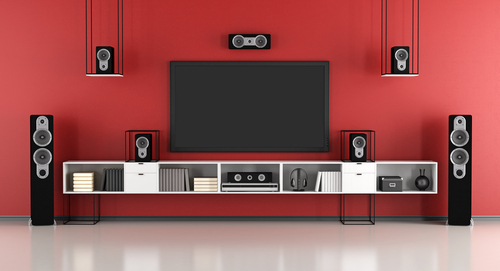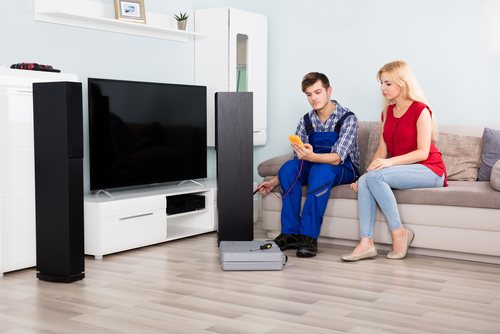Wireless Home Theater Speakers: Are They Worth It?
When it comes to home automation, wireless is the way to go. Homeowners wouldn’t want to deal with unsightly wires and cables anymore – that’s why many of them prefer to have a wireless home theater setup for their speaker systems and subwoofers.
However, is going wireless worth it?
In today’s post, we’ll take a look at the advantages of wireless home theater sound systems and the essential considerations when installing them. We hope this will help you decide the best design and setup for your home theater.
Wireless Home Theater Speakers: An Innovation
Nowadays, everyone wants convenience. It’s no wonder wireless home theater speakers is considered an innovative trend within the industry. This kind of setup means that homeowners wouldn’t have to worry about running wires and cables to the surround sound and central speakers.
This setup also allows homeowners more freedom when it comes to placement of home theater speaker systems within the room. Running into cabling problems or placement issues is a less likely occurrence. This is especially helpful when you have a smaller home theater room.
Furthermore, wireless home theater speakers setups don’t limit homeowners to attic cable installations. It’s a way to give homeowners more flexibility in exploring different kinds of aesthetics.
You wouldn’t have to take cabling limitations into account when deciding where to place your speaker system.

Aside from design flexibility, going wireless when it comes to home theater speaker systems can do more innovative things. You can transmit audio to different locations of the house, depending on your preferences.
You can re-assign speaker settings based on how you like them to function. It’s no wonder this type of setup is gaining more popularity for home theater enthusiasts.
Wireless Influence on Home Theater Speaker Systems
When going wireless started getting more and more popular, it wasn’t long before it influenced whole house sound systems. As it turns out, wireless features didn’t have that much of an impact on assignability. However, the idea of focusing on different speakers with specific audio channels has taken place.
Not Completely Wireless?
It will come as no surprise that wireless audio systems are not totally wireless. It’s not necessarily an impediment, per se – but we certainly do not want to mislead anyone.
Apologies to those who think they can merely place a speaker in a room and simply walk away, expecting it to work. Furthermore, battery-powered systems don’t have enough power, run-time, or reliability to provide the wireless functions you may be expecting.
What a wireless function does is removing the need for speaker cables. It’s easier to source power than figure out a way to run and design speaker cables. This is one of the reasons why home theater enthusiasts more prefer wireless home theater speaker systems.
However, some may still be not entirely onboard the wireless sound system train. They may still find plugging in a power cord an impediment.
Amplifiers Are Needed
Another often disregarded bit of information is the need for amplifiers. Amplification features must not be overlooked when setting up your wireless home theater sound system.
Amplifiers support the drivers of passive speakers. Passive speakers are needed to support the main active speaker. One more critical process is outputting the required speaker signals. As you can see, every component of a sound speaker system is vital.
Transforming an Existing System Into Wireless
Those who would want to incorporate wireless speakers into an AV receiver system may need the professional guidance of an experienced home theater installer to make the system function properly.
Here are some of the other important considerations when adding wireless sound system to your existing home theater system.
- Is the unit already powered, or will it need power for the subwoofer or rear speakers?
- Is using Bluetooth connectivity an option?
- Does your room have power plugs to provide power to the wireless units?
- Is the distance from the speakers to power points enough to run the needed wires and cables?

Keep in mind that there’s no textbook answer to any of these questions. There are solutions that may work for some spaces but may not be applicable to others.
That’s why it’s essential to get some guidance from professionals. They are experienced in wireless home theater installation projects.



